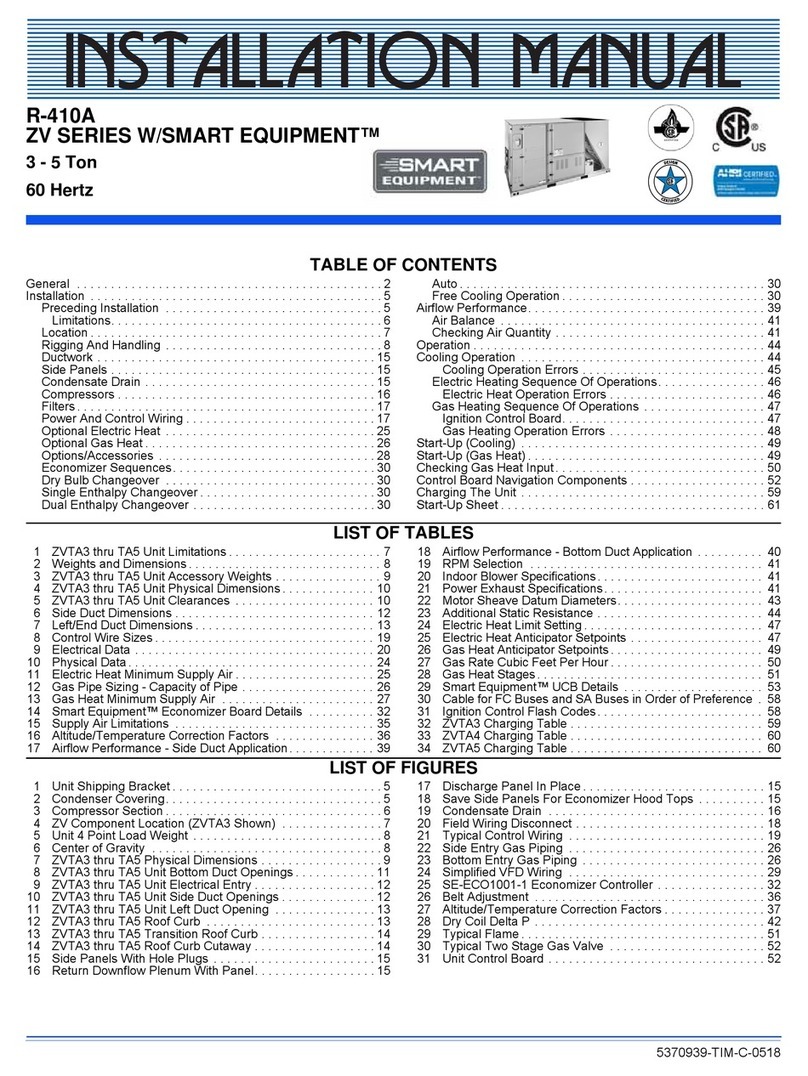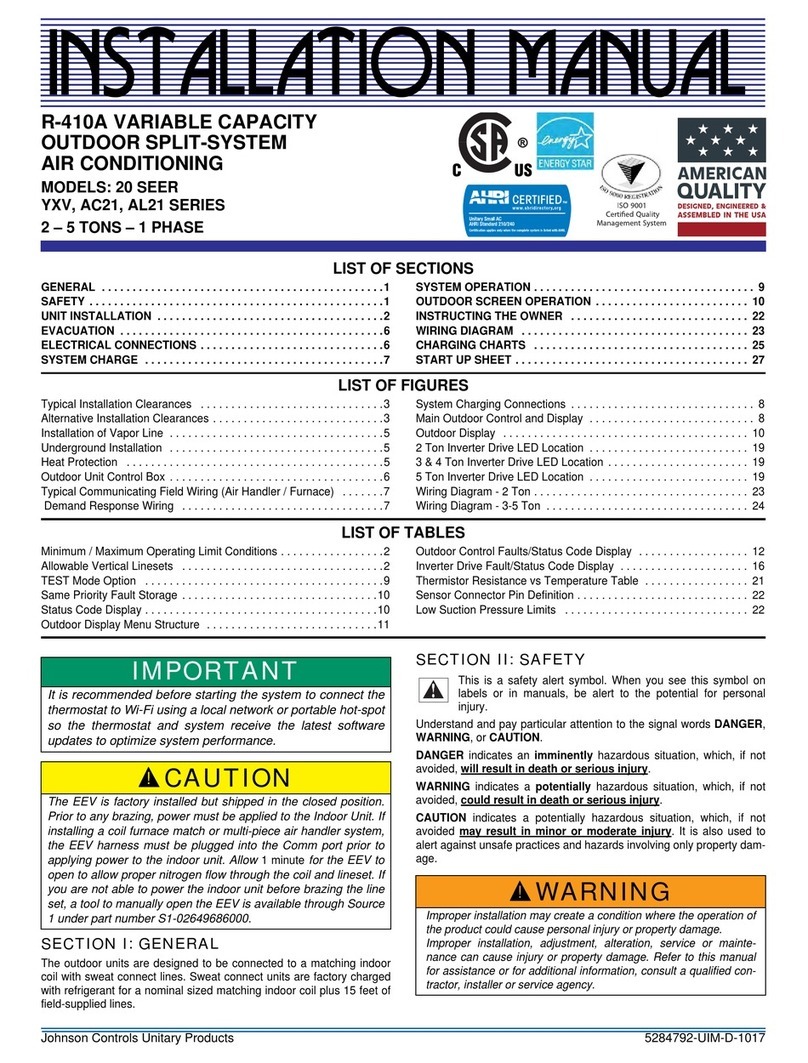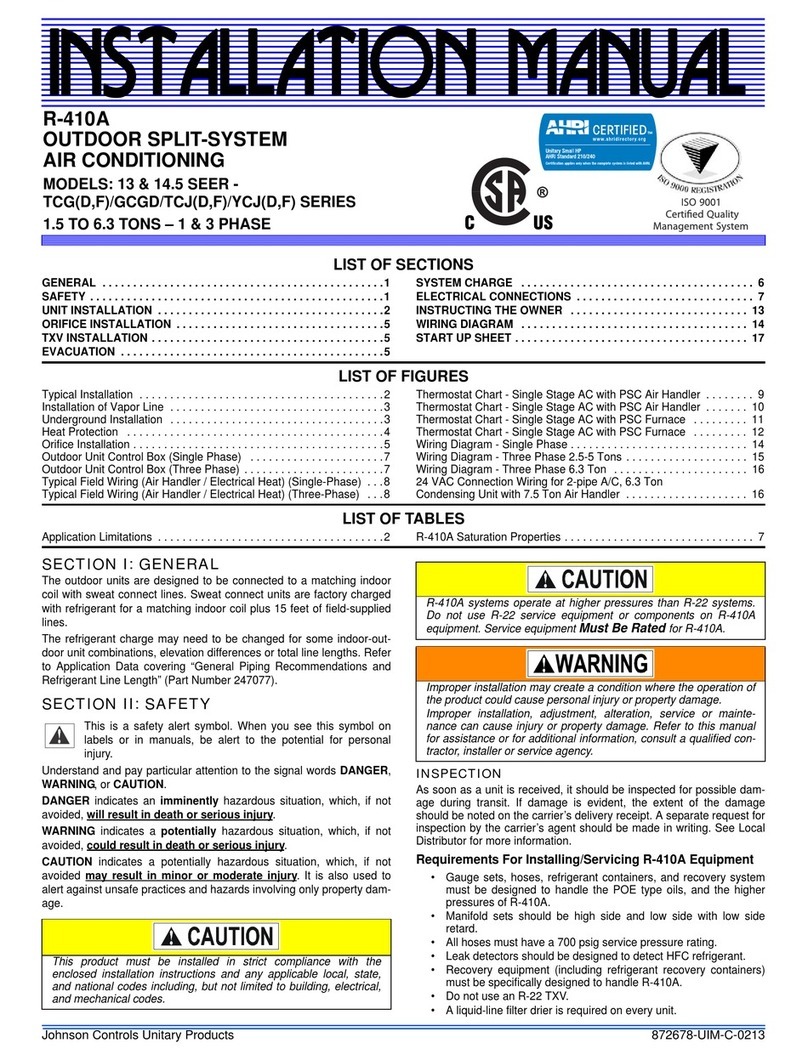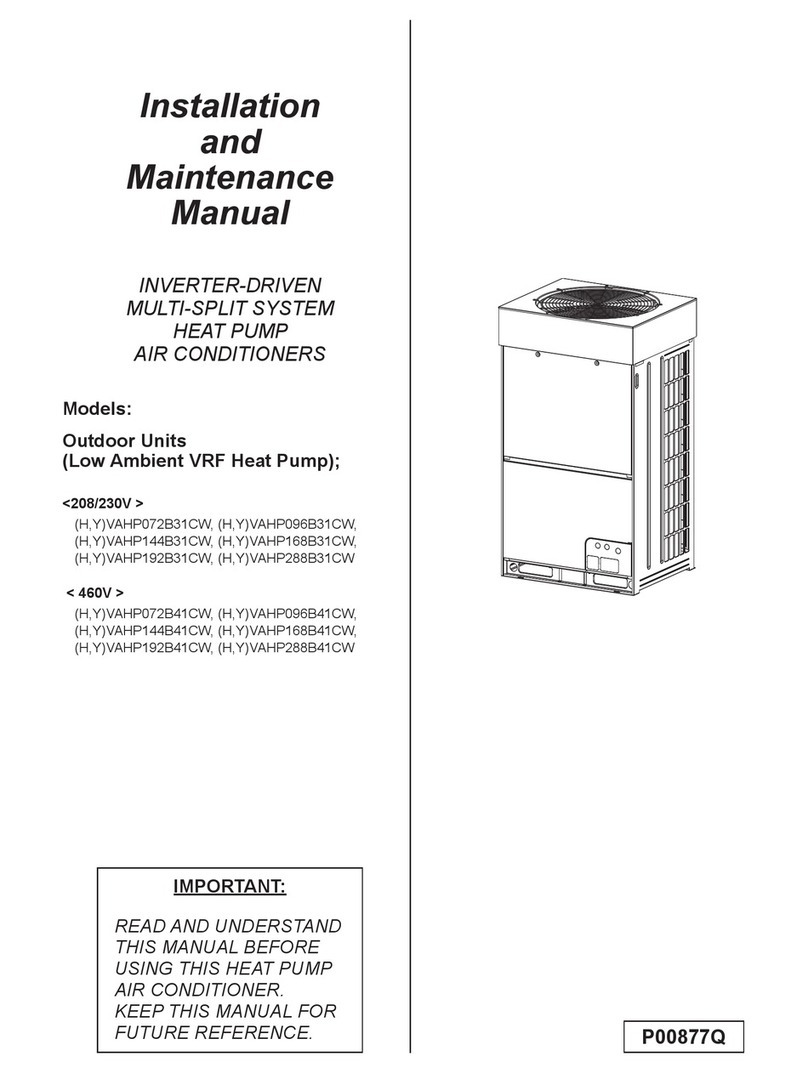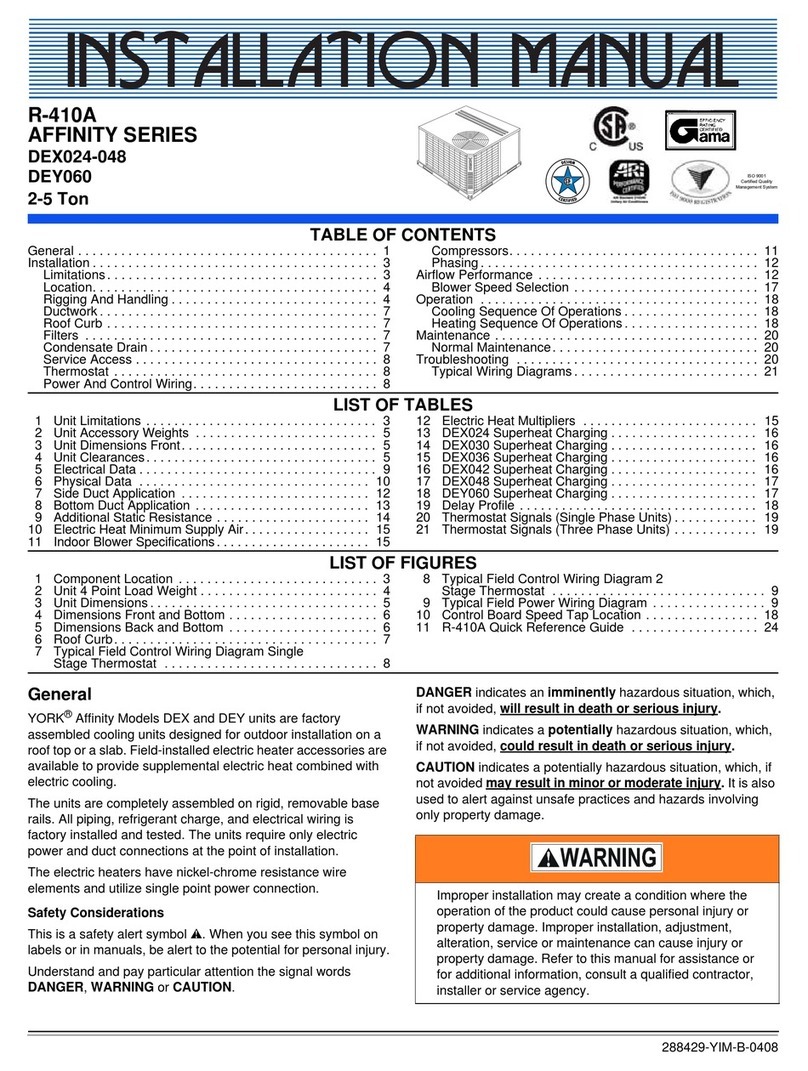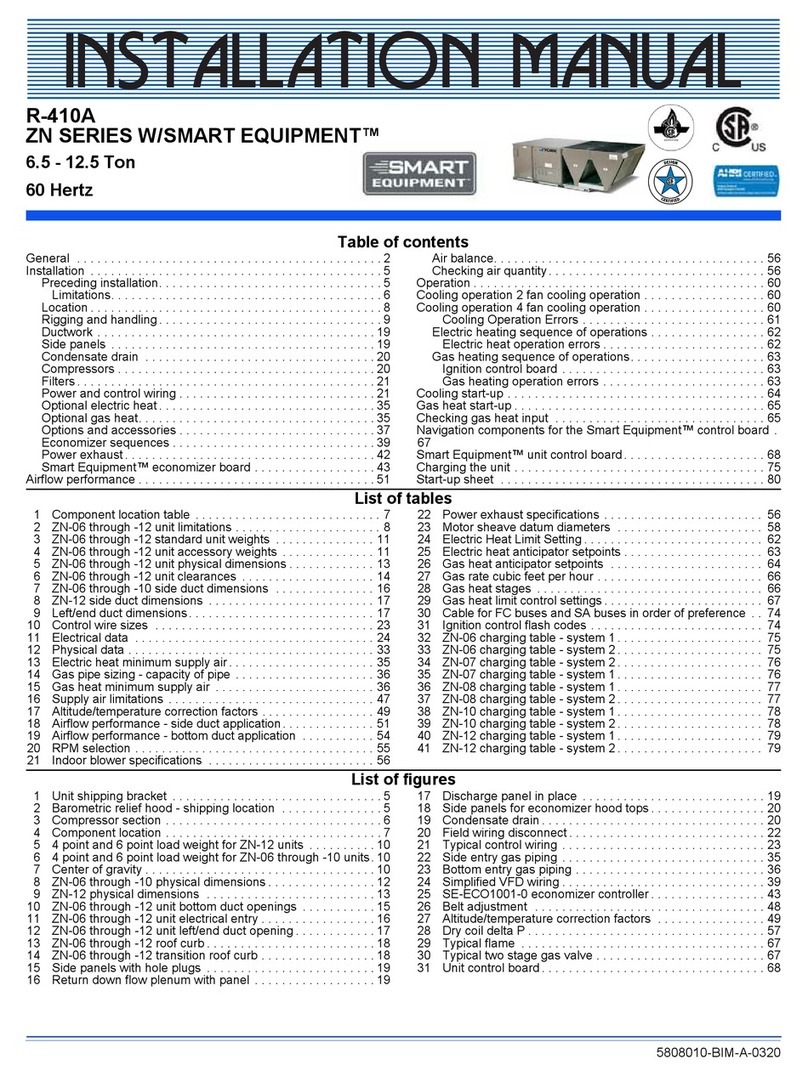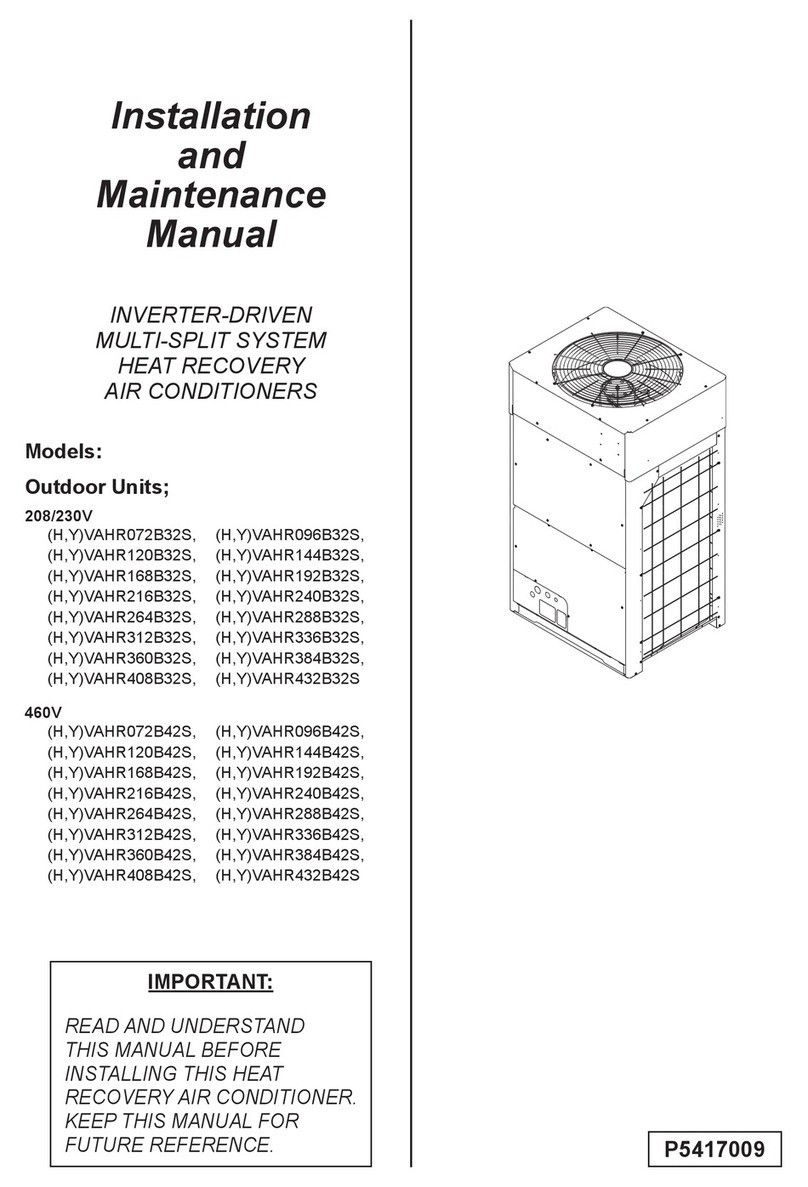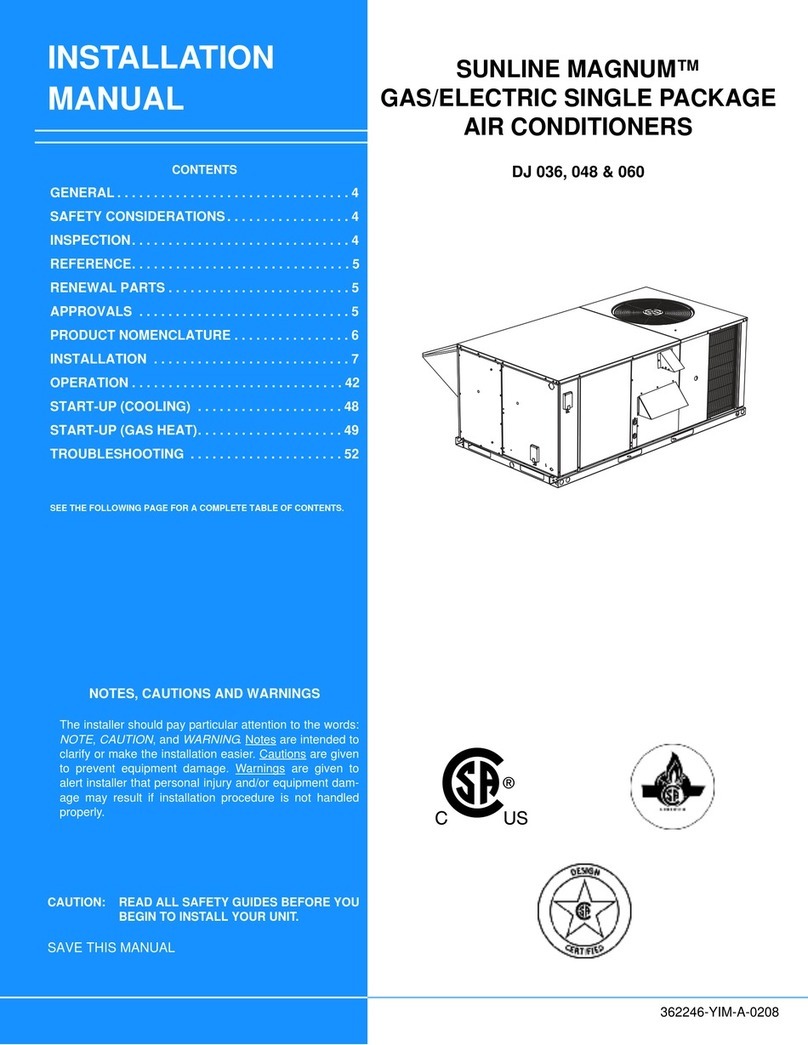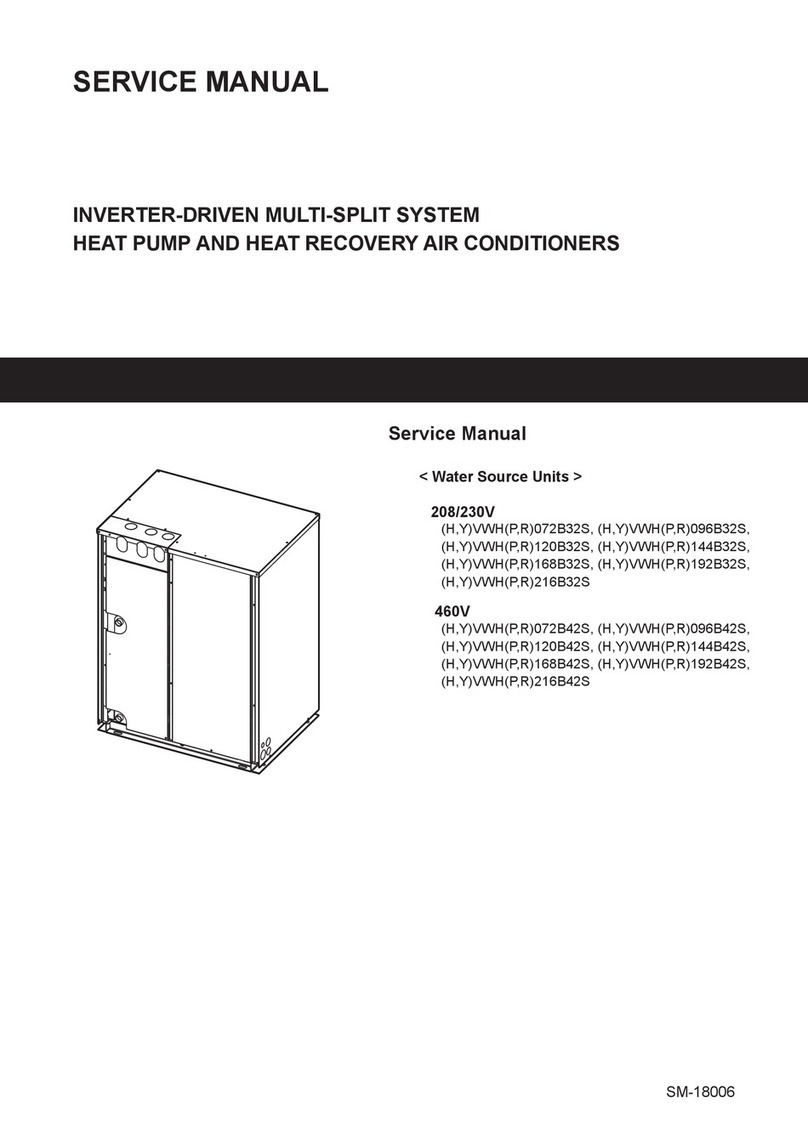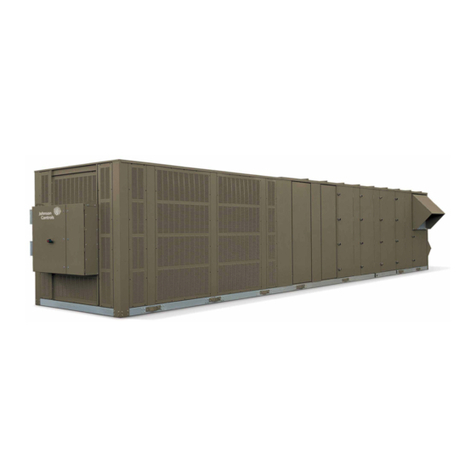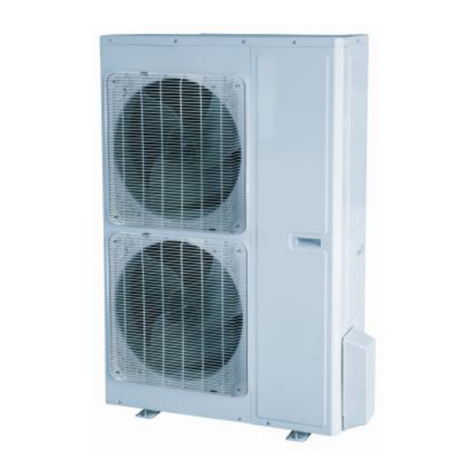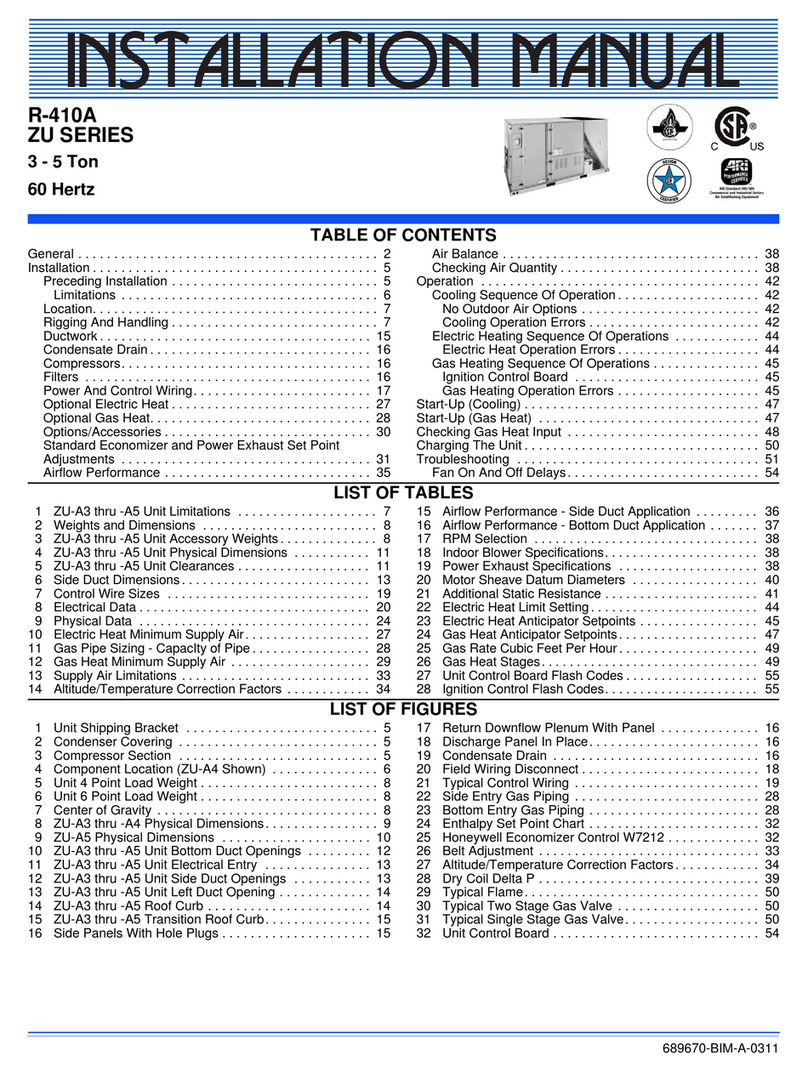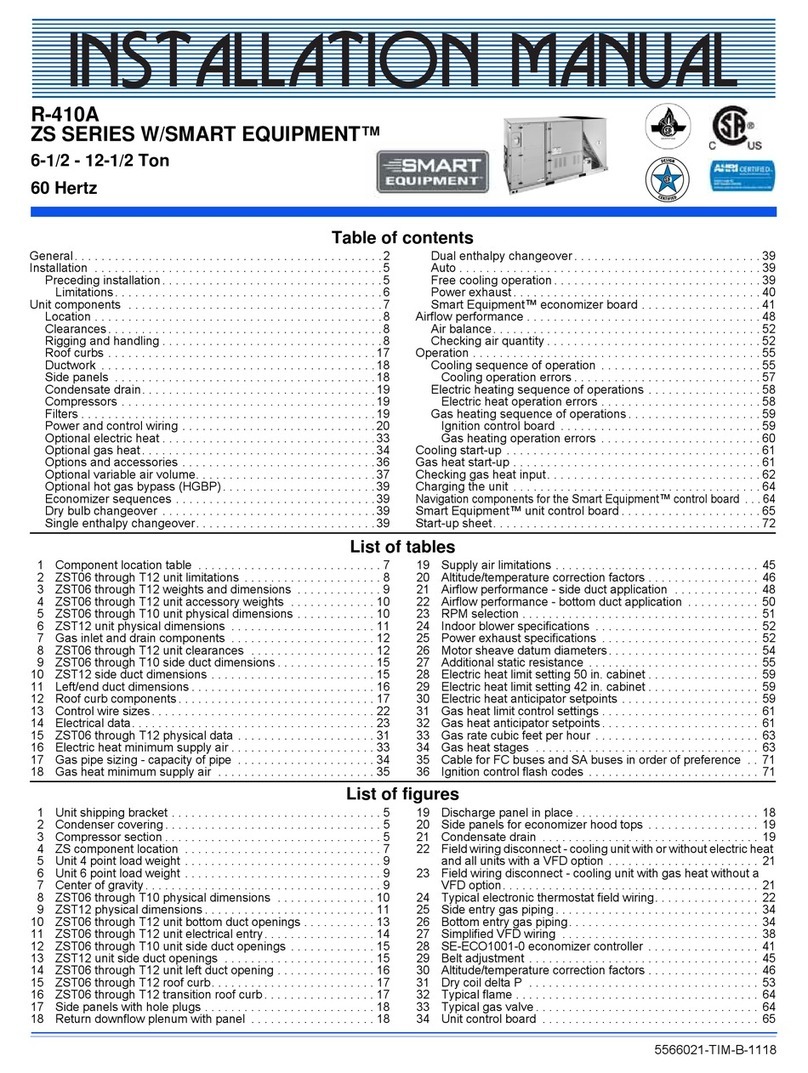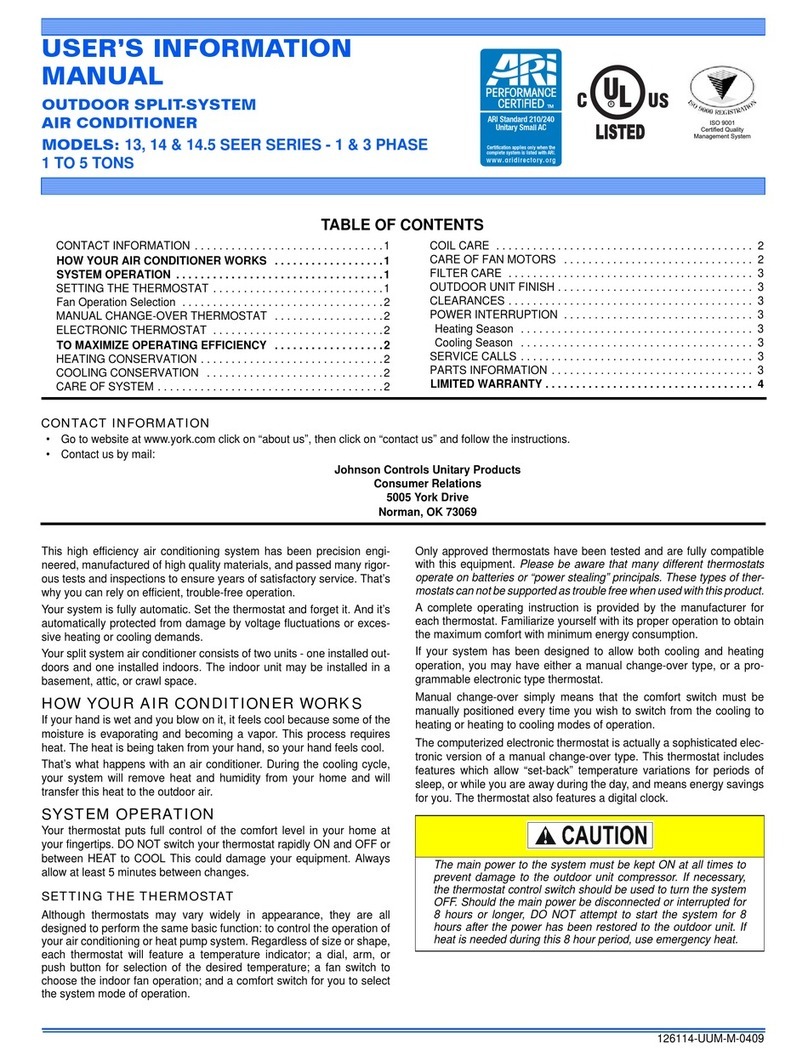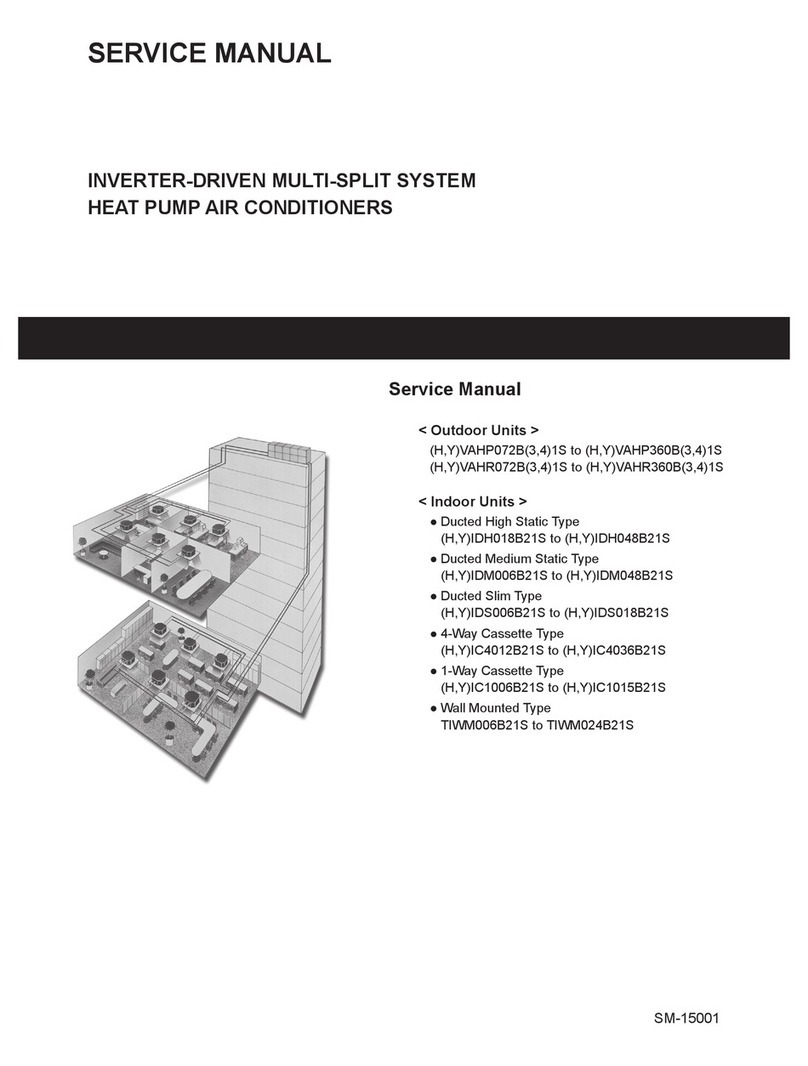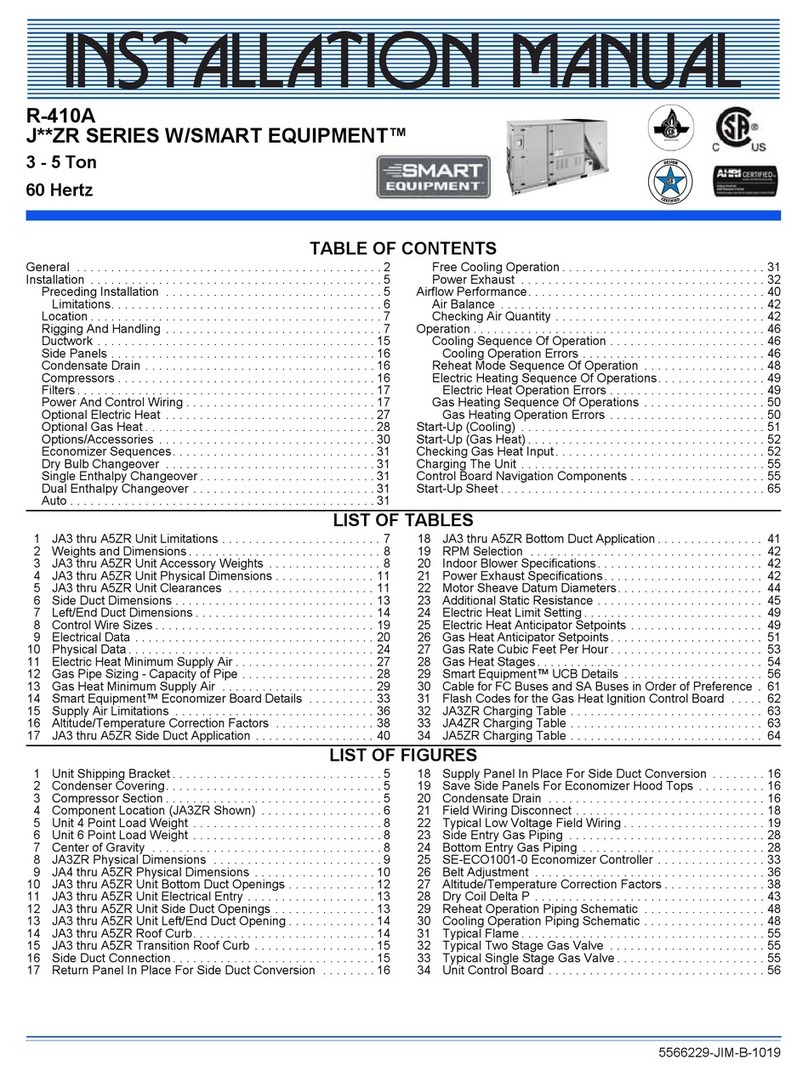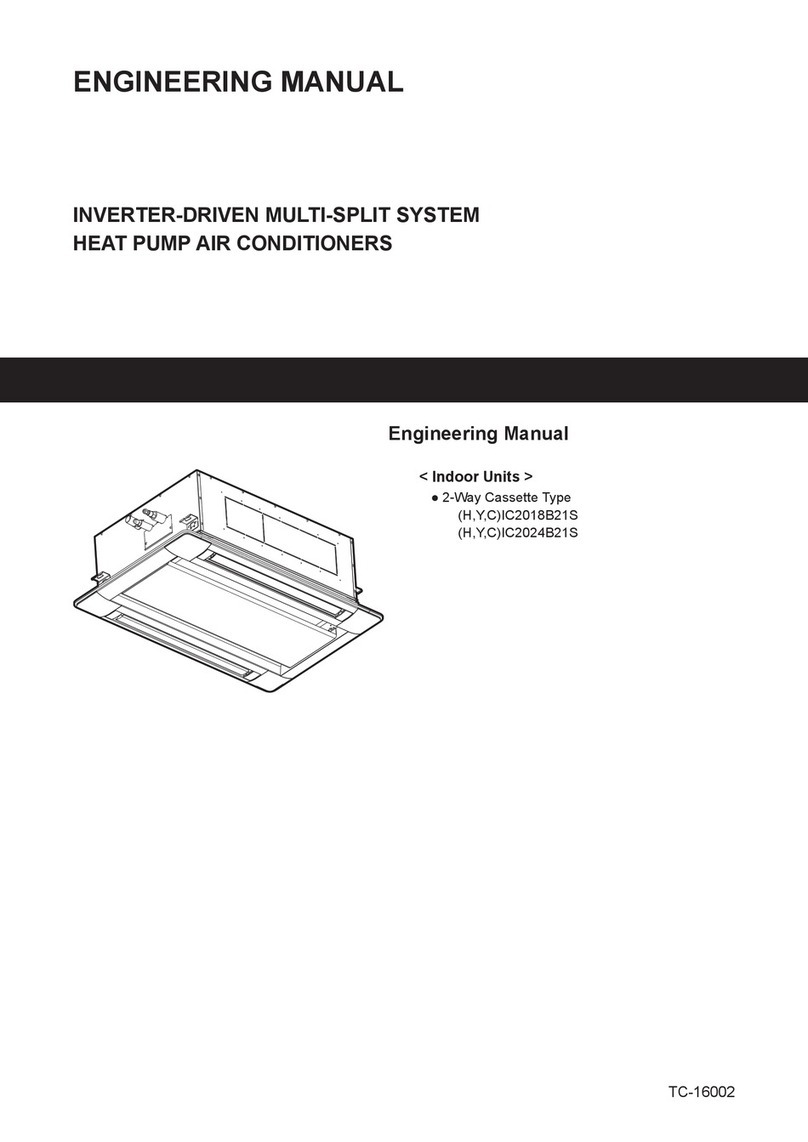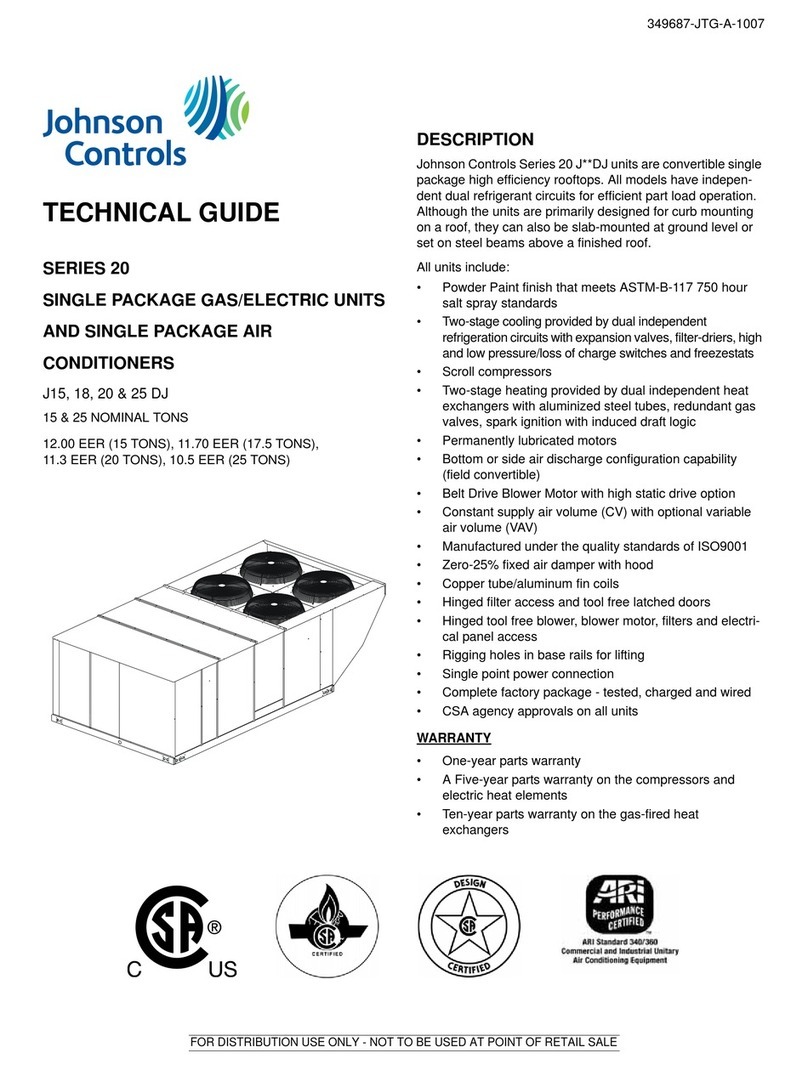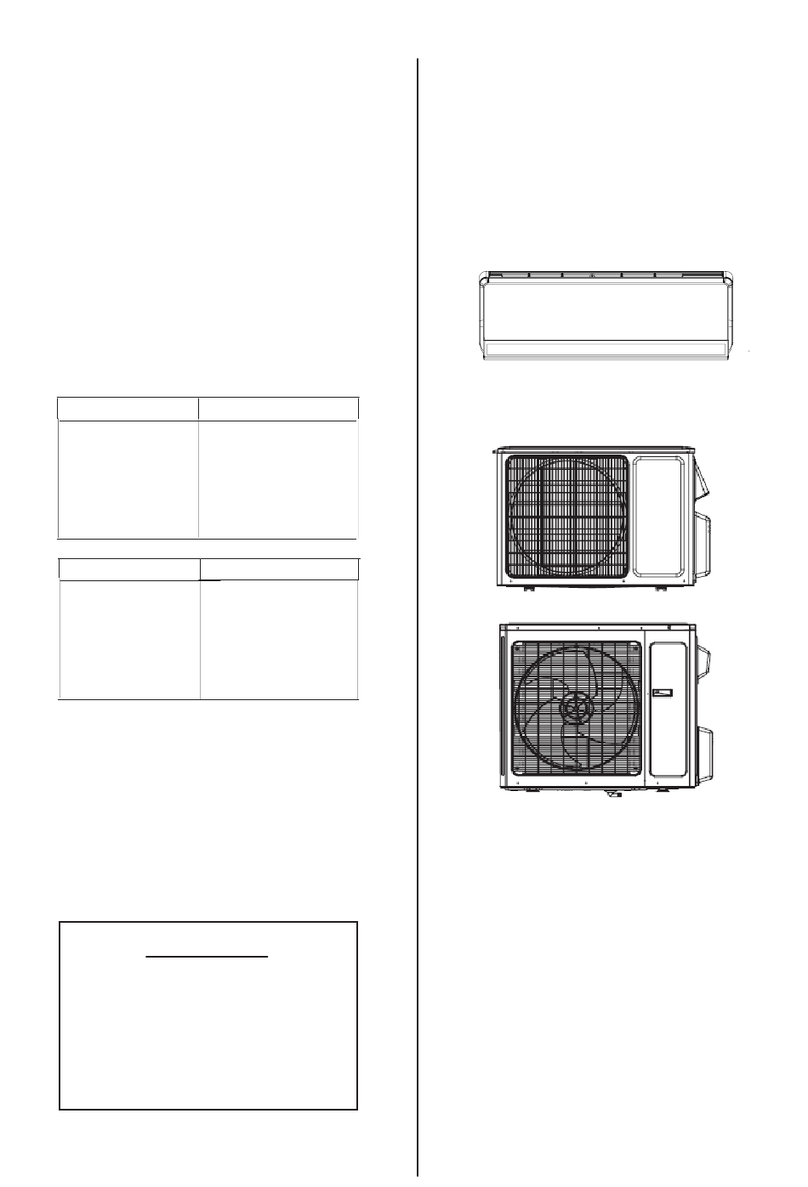
6074816-UIM-A-0421
4 Johnson Controls Ducted Systems
GROUND INSTALLATION
The unit must be installed on a solid base that is 2 in. (5.1 cm) above
grade and will not shift or settle, causing strain on the refrigerant lines
and possible leaks. Maintain the clearances shown in Figures 1 and 2
and install the unit in a level position. The base pad must not come in
contact with the foundation or side of the structure because sound may
be transmitted to the residence.
The length of the refrigerant tubing between the outdoor unit and indoor
coil must be as short as possible to avoid capacity and efficiency
losses. Excessive spacing of the outdoor unit from the home can result
in the refrigerant lines being restricted by trampling or being punctured
by lawn mowers. Locate the outdoor unit away from bedroom windows
or other rooms where sound might be objectionable.
Adverse effects of snow or sleet accumulating on the outdoor coil can
be eliminated by placing the outdoor unit where the prevailing wind
does not blow across the unit. Trees, shrubs, corners of buildings, and
fences standing off from the coil can reduce capacity loss due to wind
chill effect.
Provide ample clearance from shrubs to allow adequate air to pass
across the outdoor coil without leaves or branches being pulled into the
coil.
ROOF INSTALLATION
When installing units on a roof, the structure must be capable of sup-
porting the total weight of the unit, including a pad, lintels, rails or any
components used to minimize the transmission of sound or vibration
into the conditioned space.
WALL MOUNT INSTALLATION
Care must be taken to mount the outdoor unit on a solid base that is
sloped to shed water, secure from settlement, and is isolated from the
structural foundation or walls to prevent sound and vibration transmis-
sion into the living space.
On occasion, site conditions may require direct wall mounted brackets
to be used to locate and support the outdoor unit. In these applications,
care must be taken to address unit base pan support, structural integ-
rity, safe access and serviceability, as well as the possible sound and
vibration transmission into the structure. These applications are best
served by a correctly engineered solution.
LIQUID LINE FILTER-DRIER
The air conditioning unit’s filter-drier is located inside the unit on the liq-
uid line between the outdoor coil and the liquid valve.
PIPING CONNECTIONS
The outdoor condensing unit must be connected to the indoor evapora-
tor coil using field supplied refrigerant grade (ACR) copper tubing that is
internally clean and dry. Units must be installed only with the tubing
sizes for approved system combinations as specified in the Tabular
Data Sheet. The charge given is applicable for total tubing lengths up to
15 ft (4.6 m). Refer to the Piping Application Guide (P/N 24077) for
installing tubing of longer lengths and elevation differences.
PRECAUTIONS DURING LINE INSTALLATION
1. Install the lines with as few bends as possible. Care must be taken
not to damage the couplings or kink the tubing. Use clean hard
drawn copper tubing where no appreciable amount of bending
around obstruction is necessary. If soft copper must be used, care
must be taken to avoid sharp bends, which may cause a restriction.
2. The lines must be installed so that they do not obstruct service
access to the coil, air handling system, or filter.
3. Care must also be taken to isolate the refrigerant lines to minimize
noise transmission from the equipment to the structure.
4. The vapor line must be insulated with a minimum of 1/2-in. foam
rubber insulation (Armaflex or equivalent). Liquid lines that are
exposed to direct sunlight, high temperatures, or excessive humid-
ity must also be insulated.
5. Tape and suspend the refrigerant lines as shown in Figure 3. Do not
allow tube metal-to-metal contact.
6. Use PVC piping as a conduit for all underground installations as
shown in Figure 4. Buried lines must be kept as short as possible to
minimize the build up of liquid refrigerant in the vapor line during
long periods of shutdown.
7. Pack fiberglass insulation and a sealing material such as perma-
gum around refrigerant lines where they penetrate a wall to reduce
vibration and to retain some flexibility.
8. For systems with total line length exceeding 75 ft (22.86 m), refer to
the Piping Application Guide (P/N 24077) for vapor and liquid line
sizing, calibration of liquid line pressure loss or gain, determination
of vapor line velocity, elevation limitations, TXV connections, sys-
tem charging or traps.
CAUTION
Using a granular type drier may result in damage to the equipment.
Filter-Drier Source 1 Part No. Apply with Models
S1-401021 All
!
NOTICE
Using a larger than specified line size could result in oil return prob-
lems. Using too small a line will result in loss of capacity and other
problems caused by insufficient refrigerant flow. Slope horizontal
vapor lines at least 1 in. (2.5 cm) every 20 ft (6.1 m) toward the out-
door unit to facilitate proper oil return. If more than the 80-ft line length
is necessary, facilitate proper refrigerant velocity with adjusted line
diameter in accordance with the Piping Application Guide (P/N
24077).
CAUTION
This system uses R-410A refrigerant, which operates at higher pres-
sures than R-22. No other refrigerant may be used in this system.
Gauge sets, hoses, refrigerant containers, and the recovery system
must be designed to handle R-410A. If you are unsure, consult the
equipment manufacturer.
WARNING
Never install a suction-line filter-drier in the liquid line of an R-410A
system. Failure to follow this warning can cause a fire, injury or death.
Figure 3: Installation of Vapor Line
!
!
Liquid
Line
Incorrect
Correct Tape
Sheet Metal Hanger
Insulated Vapor Line
A0151-001

